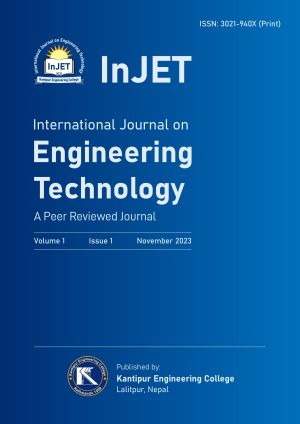Design Optimization of Fins of a Sounding Rocket for Maximum Lift-to-Drag Ratio and Minimum Radar Cross- Section Area Using ANSYS
DOI:
https://doi.org/10.3126/injet.v1i1.60952Keywords:
ANSYS, sounding rocket, Optimization, Radar Cross Section Area, Lift-to-Drag RatioAbstract
The optimization of a sounding rocket's fins is a crucial part of improving its performance. The geometric optimization of a sounding rocket's fins is presented in this paper. The main goal is to optimize the geometry for the minimum radar cross-section area and maximum lift-to-drag ratio. In CATIA, a 3D model was created. The L/D ratio was maximized using the ANSYS adjoint solver, and the radar cross-section area was minimized using ANSYS optimetrics. To determine the total RCS, the RCS of each fin was determined individually and then added together. Root, leading edge, tip, and trailing edge were the four parameters that were defined for the RCS optimization. The L/D ratio was increased by 8.3 times, and the RCS was decreased by 12% after optimization. Additionally, the body surface can be optimized further. The missile industry can benefit from the paper's findings.
Downloads
Downloads
Published
How to Cite
Issue
Section
License
This license enables reusers to distribute, remix, adapt, and build upon the material in any medium or format, so long as attribution is given to the creator. The license allows for commercial use.




